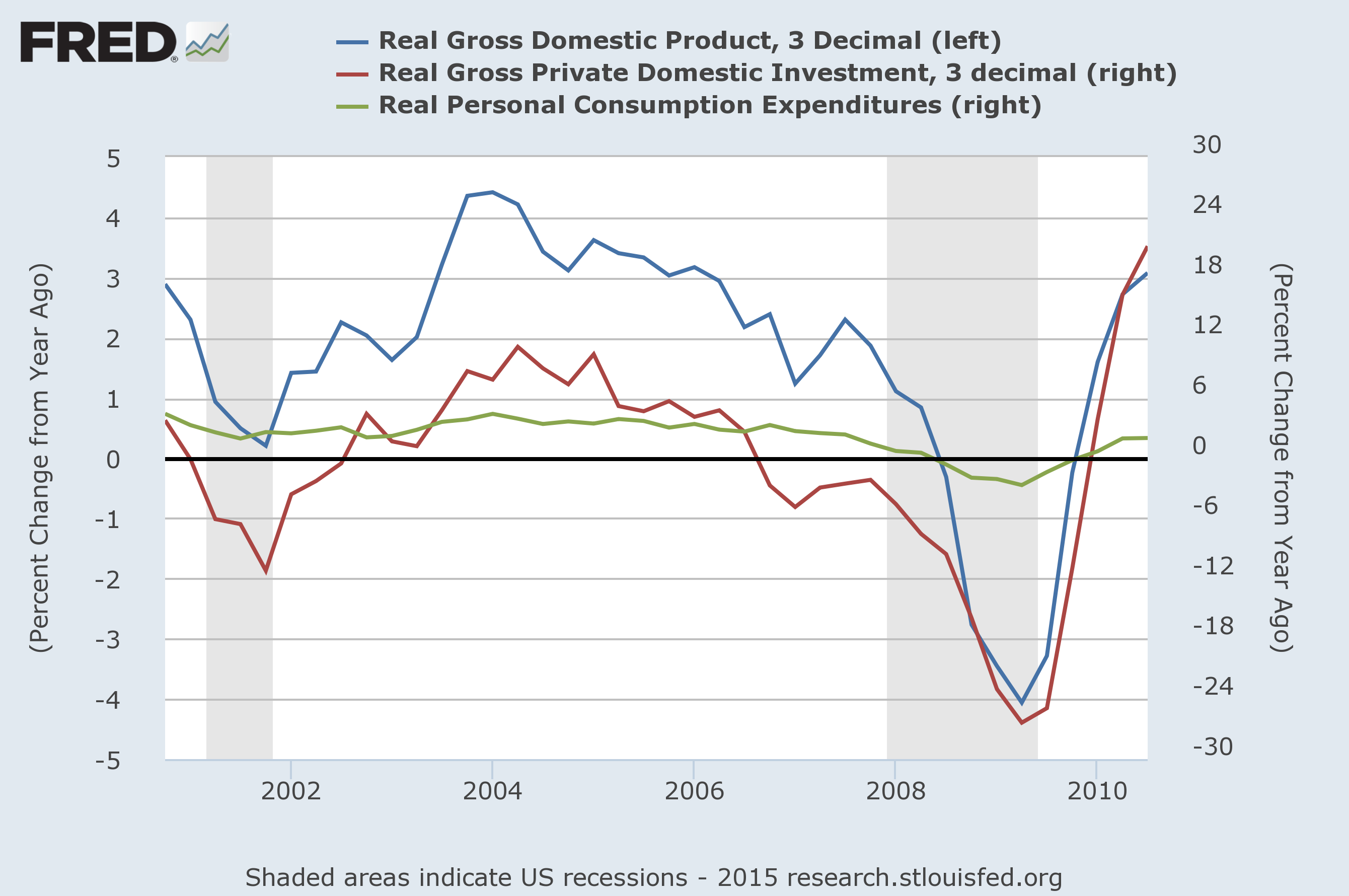In the search for timely signals about recession risk in the US, the quarterly GDP releases are of limited value. The data is published with a considerable lag, is subject to hefty revisions, and suffers from low frequency (quarterly rather than monthly). But not all corners of the GDP report are created equal for analyzing the business cycle. Indeed, when it comes to searching for clues about the state of the economy, gross private domestic investment tends to be more sensitive to the ebb and flow of the macro trend vs. headline GDP data or personal consumption expenditures (PCE).
Is this the tail wagging the dog? Perhaps. Consumer spending dominates the US economy, comprising nearly 70% of GDP, whereas private investment represents less than 20%. Nonetheless, gross private domestic investment (GPDI) is far more volatile than PCE, in part because capital investment spending is more sensitive to economic conditions, or so it appears. As a result, GPDI offers a superior metric for picking up macro distress signals ahead of PCE and headline GDP numbers, at least in theory.
As a simple test, consider how year-over-year changes in real (inflation-adjusted) GPDI compare to real GDP and PCE. In the last two recessions, private investment (red line in chart below) faded early on, posting declines well ahead of the 2001 and 2008-2009 slumps. Ditto for the 1990-91 recession.

Although private investment has an encouraging record since the 1970s of flashing earlier and clearer warning signals than GDP or PCE in quarterly terms, it’s not perfect. In the mid-1980s, for instance, GPDI’s year-over-year change briefly went negative even though a recession never materialized, based on NBER cycle dates.
Another caveat reveals itself when looking at the vintage data, which you can find at the St. Louis Fed’s ALFRED database. Analyzing the numbers using only the initial releases shows that GPDI’s annual comparisons have been known to slip into the red while the economy continued to sidestep a recession. That was the case in the second and third quarters of 2011, for instance.
These caveats also apply to GDP and PCE, which suggests that GPDI’s attributes for monitoring business still look attractive and arguably superior even after considering its blemishes.
With that in mind, the latest numbers for investment show that recession risk is low. GPDI was ahead by 5.7% in 2014’s fourth quarter compared with a year ago. That’s a respectable improvement over Q3’s 4.9% increase. Recession risk, in other words, was minimal in last year’s closing quarter.
That’s old news, of course. Tracking the macro trend via monthly data has been dispensing bullish signals for some time, and well ahead of the quarterly releases via the GDP figures. But to the extent we’re looking at the government’s estimates of big-picture economic activity, private investment is an obvious and useful place to start… as long as your analysis doesn’t end there.
